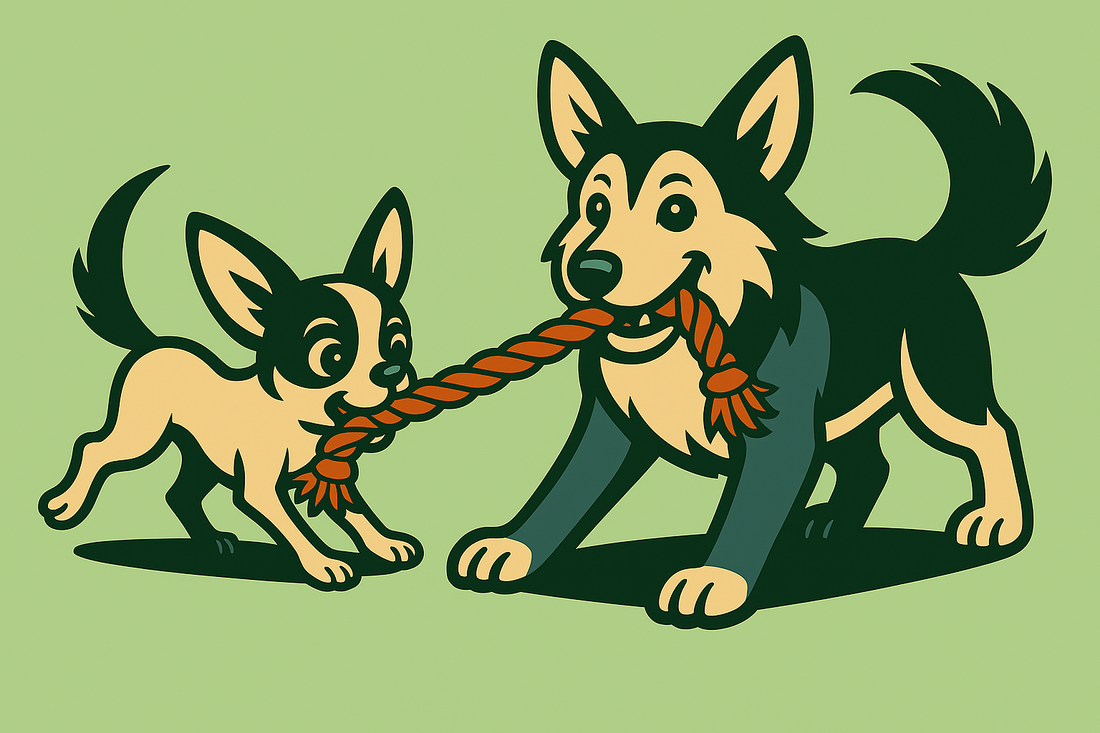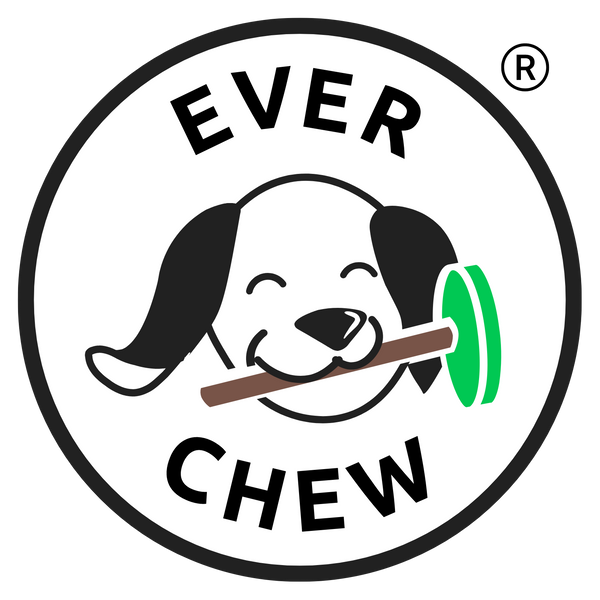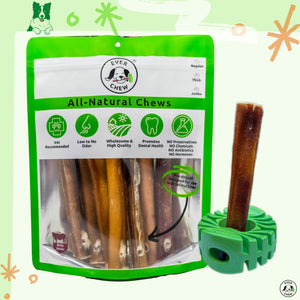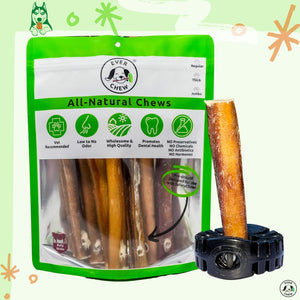Puppies: A Guide to Chewing Bully Sticks

by Kirby Kendall (Inventor of EverChew)
Puppies: A Guide to Safe Chewing, Teething, and Preventing Destruction
Puppies represent the cutest and most challenging phase of having a dog. Puppies are born without teeth, but their dental development follows a predictable timeline across all breeds. Their needle-sharp baby teeth emerge ~2-3 weeks, with a full set of 28 showing by 5-8 weeks. These "milk teeth" generate relatively modest bite forces of 80-120 PSI depending on breed size - but soon gets stronger. The toughest time is around 12-16 weeks when adult teeth start replacing baby teeth. This continues until 6-7 months of age.
Are bully sticks safe for my puppy?
The consensus among Vet publications is that bully sticks are too hard for puppies younger then 12 weeks--when their adult teeth start coming in. That's because they fail the fingernail dent test (American Animal Hospital Association). But, if you soak the bully stick in water for 15-60 minutes (depending on temperature), then the outer layer gets soft enough to dent with your fingernail. And the inner parts are softened by their saliva as they works towards it (see safe puppies). This soaking method is a common practice mentioned for other types of hard chews (Lone Tree Vet Center). So we've been comfortable doing that, but you should ask your vet before you try it.
In Short—Which EverChew Holder?
For most small breed puppies and teething puppies under 16 pounds, start with the SafetyChew Original Holder. This medical-grade elastomer construction provides necessary durability while offering enough give to protect developing teeth and sensitive gums. It also holds smaller “Regular” sized bully sticks that fits the little guy’s mouths better. For medium and large breed puppies that are over 16-ish pounds showing moderate chewing behavior, choose the SafetyChew Plus since it is still elastomeric but can take way stronger bites. Only consider the SuperChew for large breed puppies over 39 pounds who already just tear everything up.
Understanding Puppy Teething
Puppy teething involves two distinct phases, the first (2-6 weeks) happens while puppies are still with their mothers. The second phase (12-24 weeks) happens in their new homes and presents the greatest challenge for their new humans. In this teething phase, puppies experience significant discomfort as adult teeth push through, creating an intense drive to chew anything in order to get some relief.
Chewing provides these functions for puppies: relieving teething pain, exploring their environment, strengthening jaw muscles, promoting healthy dental development, and providing mental stimulation. Safe chew options like bully sticks (in a safety holder!) lets puppies satisfy these natural needs. The holder is required since puppies’ tendency to swallow objects (like a bully stick stub) make giving your puppy a “untethered” bully stick dangerous.
Life Stage Considerations
Puppy Phase (8 weeks - 6 months): Mixed breed and purebred puppies alike experience intense chewing during teething—where they're actively seeking relief from teething discomfort while exploring their world through their mouths. Small breed puppies like Chihuahuas require extra caution due to their delicate structure, while large breed puppies like Great Danes may have disproportionate jaw strength before learning control. That’s why EverChew recommends different holders for different puppies.
Adolescent Phase (6-18 months): Most destructive chewing behaviors settle down around 8-12 months, but adolescent puppies have some rebound destructive phases. Like some dogs experience a second destructive phase around 10-14 months as they test boundaries. High-energy breeds (for example Border Collies) often require more mental stimulation (provided in-part by chewing) during this period.
Managing Destructive Chewing
Destructive chewing in puppies stems from multiple causes. Like discussed above, Teething discomfort drives the most obvious destructive behavior, as puppies seek relief by chewing anything available. Boredom and excess energy may also show up as destructive chewing, especially in high-energy breeds or when puppies lack adequate physical and mental stimulation. Anxiety and stress can trigger destructive chewing, particularly separation anxiety when puppies are left alone. And of course, Natural exploration causes puppies to investigate their environment through chewing, which means they will chew your shoes or chair legs. An EverChew bully stick can be part of the safe chewing options for your puppy—one that also helps scrub their teeth clean.
EverChew Selection Guidelines for Different Puppy Types
Choose the SafetyChew Original Holder if your puppy:
Choose the SafetyChew Plus Holder if your puppy:
· Weighs 16-39 pounds
Choose the Superchew Nylon Holder if your puppy:
· Weighs over 39 pounds



